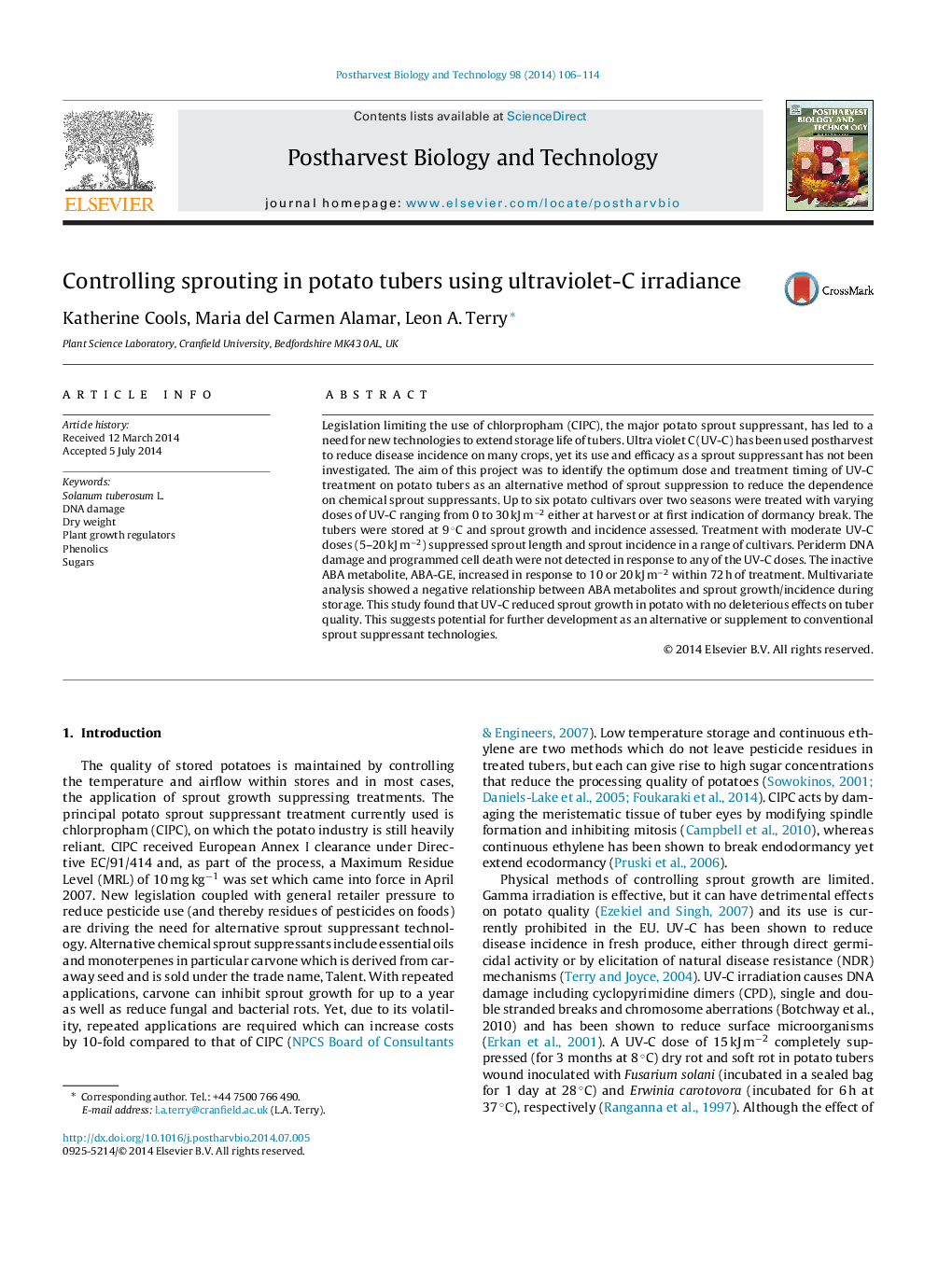| Article ID | Journal | Published Year | Pages | File Type |
|---|---|---|---|---|
| 4518247 | Postharvest Biology and Technology | 2014 | 9 Pages |
•Moderate UV-C doses (5–20 kJ m−2) suppressed sprouting in potato cultivars.•Periderm DNA damage and apoptosis were not detected in response to UV-C.•ABA-GE increased in response to 10 or 20 kJ m−2 within 72 h of treatment.•There was a negative relationship between ABA metabolites and sprouting during storage.
Legislation limiting the use of chlorpropham (CIPC), the major potato sprout suppressant, has led to a need for new technologies to extend storage life of tubers. Ultra violet C (UV-C) has been used postharvest to reduce disease incidence on many crops, yet its use and efficacy as a sprout suppressant has not been investigated. The aim of this project was to identify the optimum dose and treatment timing of UV-C treatment on potato tubers as an alternative method of sprout suppression to reduce the dependence on chemical sprout suppressants. Up to six potato cultivars over two seasons were treated with varying doses of UV-C ranging from 0 to 30 kJ m−2 either at harvest or at first indication of dormancy break. The tubers were stored at 9 °C and sprout growth and incidence assessed. Treatment with moderate UV-C doses (5–20 kJ m−2) suppressed sprout length and sprout incidence in a range of cultivars. Periderm DNA damage and programmed cell death were not detected in response to any of the UV-C doses. The inactive ABA metabolite, ABA-GE, increased in response to 10 or 20 kJ m−2 within 72 h of treatment. Multivariate analysis showed a negative relationship between ABA metabolites and sprout growth/incidence during storage. This study found that UV-C reduced sprout growth in potato with no deleterious effects on tuber quality. This suggests potential for further development as an alternative or supplement to conventional sprout suppressant technologies.
